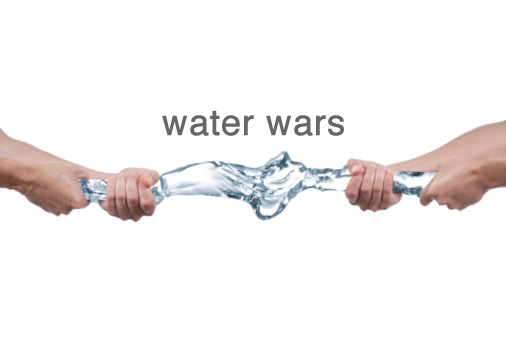Hi guys, I'm writing this post because I am interested in what exactly are the benefits and principles behind integrated water management. Why does this idea, which seems fairly simple and commonsense command such a big chuck of academic words and interest? As such, this post seems to be rather long, but I hope it is at least interesting! Apologies!
What is integrated water management?
What is integrated water resource management? IWRM is commonly believed to maximise economic and social benefits with great consideration for ecological benefits and long-term sustainability in the usage of water resources. It goes without saying, that such concepts were developed in anticipation or response to increasing pressure on global freshwater resources, a resource that is key to almost all human societies, and also for natural life.
As illustrated, integrated management attempts to bring together as many elements and aspects as possible, often in consultative and participatory means, so as to increase potential for learning and knowledge transfer. (Image)
At the same time, institutions facilitating integrated management can serve to strengthen authority and increase efficiency of command and control structures. This will ultimately enable more optimal decision-making regarding the management of water, land, and natural resources.
Questions of scale
To start with, an area of interest must be properly defined. A local authority's version of water management would likely differ greatly from a country's version. A country's version of water management may not sit well with other countries who share the same river basin system either. Beyond the scale of space, integrated water management must also consider time and opportunity.
A view that accounts for many resources and uses, but not the source of river waters in mountains. (Image source)
River basin management, while having the disadvantage of not addressing political boundaries, has the distinct advantage of grouping all water users and water resources available in a hydrologically "contained" area. By doing so, all water users which may be impacted by consumption of other users in this "contained" area are managed together, such that authorities are forced to justify any unequal(or equal) distribution of water. This has positive implications for decision making conflict resolution, as I will elaborate.
Non-technical sides
· "A future water management plan should reshape
global demands rather than trying to increase supply" - Kedziora and Kundzewicz (2013)
If anything, integrated, wide scale water management highlights the impossibility of getting more out of nothing. Any increase in water usage upstream will consume more water and impact users downstream. This is why in water scarce regions, managers must also deal with demand side factors, given limits of increasing supply.
Methods to influence demand may be simple, such as charging higher prices for water and also reducing the ability of private users to take their own water (through private wells, etc.). It is also possible to encourage growth of less-water intensive crops by subsidising their production, or by increasing imports of water intensive crops to an area. Of course, a caveat is that the suitability of methods must be assessed in context.
Conditions that support integrated management are also a well studied field. It is commonly agreed that supportive institution and mechanisms need to be in place before any such management can be successful. Cultural belief in the system and cultural knowledge are essential to support and inform the system, while managers must develop common goals together with all stakeholders Additionally, regulation which gives authorities some formal or legal power, and regulation which can help incentivise integrated management through market mechanisms play another large role in the success or failure of integrated management. This groundwork setting has to be done with care and some amount of guesswork, as overly heavy focuses on economic concerns tend to introduce inefficient frameworks that cannot balance social and ecological concerns.
Application in Africa
Mehta and Movik write that IWRM has been the hype of the past two decades, and is strongly supported by global initiatives and organisations like the World Bank and the African Development Bank. I would argue that integrated water management offers a good starting point for resolving difficult conflicts among stakeholders. In South Africa, researchers argue that public participation can nudge existing conflicts in more positive directions.
In south Africa (Tanzania), Rockstrom et al. argue that IWRM can potentially identify areas most in need of increased water security, so that limited water resources may be diverted to those areas without affecting areas which are already better off. They also write that IWRM has important flow on benefits, such as increased focus on a more holistic assessment of successes of various development and water projects, rather than a small scale and insular assessment.
Despite this, Mehta and Movik continue to write that in Africa, implementation has not been easy nor amazingly successful. Many formal and informal legal systems and/or customs conflict, and further complicate the already complex natural boundaries of water networks. This shows the gap between the potential of these recommended systems, and the actual reality.
The fact that institution building efforts are hampered means that the basic building blocks of IWRM are unstable. When institutions do not have sufficient authority, it may be difficult to come to any consensus, despite participation and consultation. I think that more needs to be done to fulfill the promises of IWRM in Africa (and maybe elsewhere too), particularly in trust and authority building. While public participation may be a cornerstone of IWRM, it may have also sabotaged it in Africa. The consultative process increases time and effort spent to reach conclusions (just look at global climate negotiations for an example). In a complex socio-cultural environment such as most African nations, it may be impossible to politely please everyone.
The above paragraph was my own reflection on the subject, and I especially welcome any feedback in the comments section!
Stay starchy
Mr. Cassava









